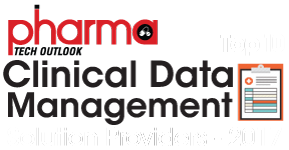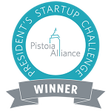|
With the advance of precision medicine, ensuring that clinical studies more accurately reflect real-world patients needs to be at the heart of drug discovery and development. Historically, one of the reasons that so many studies fail is because patient cohorts are often not defined optimally for the treatment being investigated. Step one in changing this process is access to highly annotated and relevant biospecimens. The critical role of biospecimens was underscored when the Precision Medicine Initiative (PMI) announced by the White House in January 2015 was funded to include recruitment and follow-up of one million or more patients whose lifestyle, medical data and biospecimen samples will be collected for research.
For years even before PMI, the life sciences industry, academic institutions and the National Institutes of Health invested heavily in biospecimen resources through federal grants and contracts. In fact, the Collaborative Human Tissue Network, funded by the National Cancer Institute, brought together over 20 years more than 100 hospitals to make specimens available to researchers. All of these steps have been instrumental in advancing science and the field of medicine. However, until now, up-to-date and relevant patient clinical data was the missing link between the biospecimens received by researchers and the practice of medicine in the real world. Biospecimens, whether procured through the Collaborative Human Tissue Network or even some private companies, generally include a pathology report and general demographic information, such as age, race, gender, surgical pathology and quality control diagnoses. What these samples don’t include, however, is the clinical history of the disease progression, co-morbidities that the patient might have or follow-up information.1 At the same time, PMI highlighted a broader call across the industry for increased participation in clinical trials. Clinical trials often experience delays, early termination or other impediments due to failure to meet recruitment goals.2 One reason participation historically has been low is that hospitals, with the exception of academic medical centers, and other healthcare settings frequently struggle to manage immense workloads and typically do not have human resources to support research despite interest in doing so. Many healthcare organizations find it challenging to incorporate research engagement alongside their core mission of providing patient care. Novaseek aims to bridge the gap between patients (and their real-world clinical data), providers across a variety of healthcare settings and researchers. By automating critical parts of research and clinical studies, less effort is required to identify exactly the right patients who can participate and to collect their clinical data and biospecimens. Through our cloud-based Clinical Data Network for Research (CDNR) platform, we are helping researchers access real-world data reflective of patients who may benefit from the drugs in development. CDNR connects researchers with highly annotated human biospecimens and clinical history and prospective longitudinal clinical data from consented patients, helping them to achieve more precise segmentation, identify patterns of greater efficacy and analyze a fuller spectrum of data, more reflective of real-world patients. We are transforming how researchers access and interact with clinical patient data and biospecimens, allowing for the assembly of cohorts of patients for tracking in a turn-key way for translational medicine, clinical feasibility and observational studies, positioning them for a greater probability of success and bringing them a step closer to getting better medicine to patients faster. 1. https://www.chtn.org/faqs.html 2. http://www.appliedclinicaltrialsonline.com/barriers-clinical-trial-recruitment-and-possible-solutions-stakeholder-survey Precision medicine is an exciting area of innovation for researchers in academia and industry. It holds the promise of better outcomes for patients, and it is changing the way patients experience disease and treatment.
By definition, the patient population for a targeted medicine is smaller than that of the disease category as a whole. Medicines affect patients differently.1 Even in a condition as widespread as diabetes, diagnosed in 21 million people in the US2, 43 percent of patients do not respond to initial treatment.1 In conditions with smaller patient populations, the subset of one phenotype of patient versus another can be small indeed. The burden of precision medicine researchers is to design clinical studies targeting the specific clinical patient phenotype for which the treatment is expected to be most effective. Due to the current clinical research infrastructure, most patients are recruited into studies from a pool of academic centers. But the current system often may not provide researchers with enough diversity for the study. Importantly, even earlier in the R&D process, researchers may not have access to enough data to identify all of the correct clinical phenotypes of patients who should be benefiting the most from the new medical developments. Currently, such information and data are hard to get. At the same time, a 2013 Research!America poll showed that 72 percent of Americans said they would likely participate in research if recommended by their doctor. The same survey showed that 74 percent are willing to share privacy-protected personal health information to help researchers better understand disease and develop new ways to prevent, treat and cure them.3 Novaseek bridges this gap by connecting researchers with real-world clinical data for much improved discovery or study design as well as observational studies. The process is intuitive and straightforward using Novaseek’s cloud-based Clinical Data Network for Research (CDNR) platform. CDNR interfaces easily with hospital data sources, enabling researchers to define patients and patient cohorts based on detailed clinical criteria and request biospecimens highly annotated with clinical data from consented patients. Researchers gain access to health insights and the biospecimens necessary for research and clinical studies success, based on better understanding of patient populations. CDNR is an important tool in the quest to make more effective therapies available to patients sooner. 1. http://www.personalizedmedicinecoalition.org/Userfiles/PMC-Corporate/file/pmc_the_case_for_personalized_medicine.pdf 2. http://www.cdc.gov/diabetes/data/statistics/2014statisticsreport.html 3. https://www.elsevier.com/connect/poll-majority-of-americans-would-participate-in-clinical-trials-if-recommended-by-doctor |


